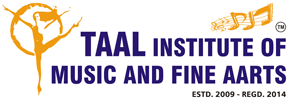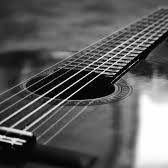The tabla is a widely popular South Asian percussion instrument used in the classical, popular and religious music of the northern Indian subcontinent. The instrument consists of a pair of hand drums of contrasting sizes and timbres.

The tabla is a widely popular South Asian percussion instrument used in the classical, popular and religious music of the northern Indian subcontinent. The instrument consists of a pair of hand drums of contrasting sizes and timbres.
The term tabla is derived from an Arabic word which means “drum”, and this attests to its status as a product resulting from the fusion of musical elements from indigenous Hindu and the Central Asian Muslim cultures that began in the late 16th century.
The smaller drum, played with the dominant hand, is called dayan and can also be referred to individually as “tabla.” It is made from a conical piece of wood hollowed out to approximately half of its total depth. One of the primary tones on the drum is tuned to a specific note, and thus contributes to and complements the melody.
The tuning range is limited although different dayan-s are produced in different sizes, each with a different range. For a given dayan, to achieve harmony with the soloist, it will usually be necessary to tune to either the tonic, dominant or subdominant of the soloist’s key.
The larger drum, played with the other hand, is called bayan (lit. “left”; aka. dagga, dugg?, dh?m?). It is a bowl shape made of metal (or sometimes clay or wood, although not favored for durability). It has a much deeper bass tone, much like its distant cousin, the kettle drum.
The Tabla is regarded as the queen of drums and percussion instruments and is the most popular Indian rhythm instrument. It consists of two drums, the Bayan (big bass drum) and the Dayan.The two of them are almost always played together. Both the two drums as a pair and also the Dayan on its own – as opposed to the Bayan – are called Tabla.
Both drums have a body that is closed at the bottom. The open top is mostly covered with a goat leather skin. To the edge of this basic skin, a second skin (Kani) is attached. In the centre of the skin is the so-called GAB: a black area which gives the instrument a special sound and makes the variety of sounds and modulations possible. It is a fine art to apply this GAB in the correct mixture, consistency and strength of a paste which consists mainly of rice flour and iron filings.
When playing, the two drums are placed on rings (Bira) which support them. The tuning wedges that are held by leather straps at the sides are meant for tuning the instrument. Depending on whether the wedges are beaten upwards or downwards by the tuning hammer, the sound gets lower or higher. A fine tuning is done by beating with the tuning hammer on the woven ring around the skin.
Bayan:
The Baaya takes on the bass part of the drum duo. The body of the Baaya is mostly made of chrome-plated copper. It is played by the index finger and the middle finger of the left hand in turns or with both fingers simultaneously. While doing this, the ball of the thumb rests lightly on the edge of the skin or modulates the pitch by slightly pressing the skin.
Dayan:
The Daaya is made of different types of wood. Please see the explanations on this topic in the next paragraph about the meaning of the wood regarding the quality of a Daaya. It is customary, especially in Kolkata, to hollow out the inside of the body of a Dayan relatively roughly. The tuning wedges that are held by leather straps at the sides are meant for tuning the instrument.
Depending on whether the wedges are beaten upwards or downwards by the tuning hammer, the sound gets lower or higher. A fine tuning is done by beating with the tuning hammer on the woven ring around the skin. The size of a Dayan is defined by the diameter of the skin. Sizes of 5 to 6 inches are in use. The standard sizes are about 5 1/4 inches to 5 1/2 inches whose tuning is around C.
The measurements can also be given in centimeters. The tuning of a Dayan depends on the skin diameter. The smaller the skin is, the higher is the sound of the Dayan; the bigger the skin diameter, the lower it can be tuned. Specially low or high Dayans are played together with corresponding high or low melody instruments.
Sri Veena Vani School of Music is a premier music school in south Bangalore.
Sri Veena Vani School of Music has (1974) successfully completed 47 years as a prestigious & renowned institution & has done a tremendous achievement by imparting music education to over 4000 students till date, in the age group of 4 to 70 years.
About 14 different instruments and vocals in both Carnatic and Hindustani styles, as well as light music and playback singing are taught here.

Tabla Lessons are offered by Taal Institute of Music and Fine Aarts for all ages and skill levels. At Taal Institute of Music and Fine Aarts, we have varied batch sizes.

Tabla Lessons are offered by Saraswatim Music College for all ages and skill levels.

The tabla is a pair of twin hand drums from the Indian subcontinent. Since 18th century, tabla has been the principal percussion instrument in Hindustani classical music, where it may be played solo, as accompaniment with other instrument and vocals, and as a part of larger ensembles.

Learn Tabla with N.S. Tabla classes both online and offline as per your preferences. The most affordable music institute of India. Join today and make your dream come true

Tabla classes are offered by ST Marys Musical. All our tutors are fully qualified on their chosen instruments and hold an enhanced disclosure. Our lessons take place in a fully equipped, professional music school. For our students we only use the very best equipment available.
© 2025 coursetakers.com All Rights Reserved. Terms and Conditions of use | Privacy Policy